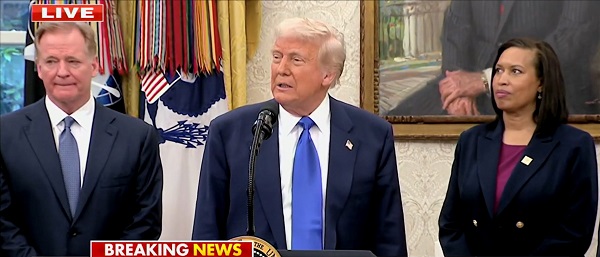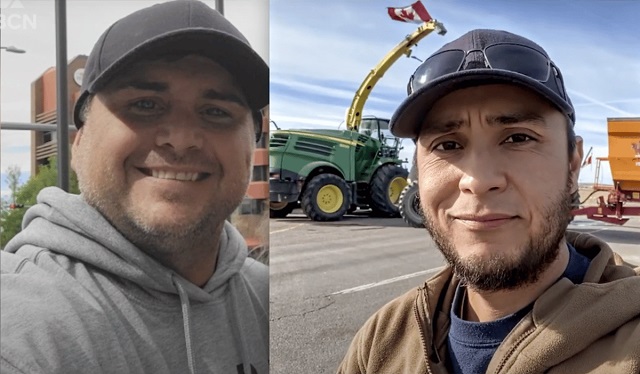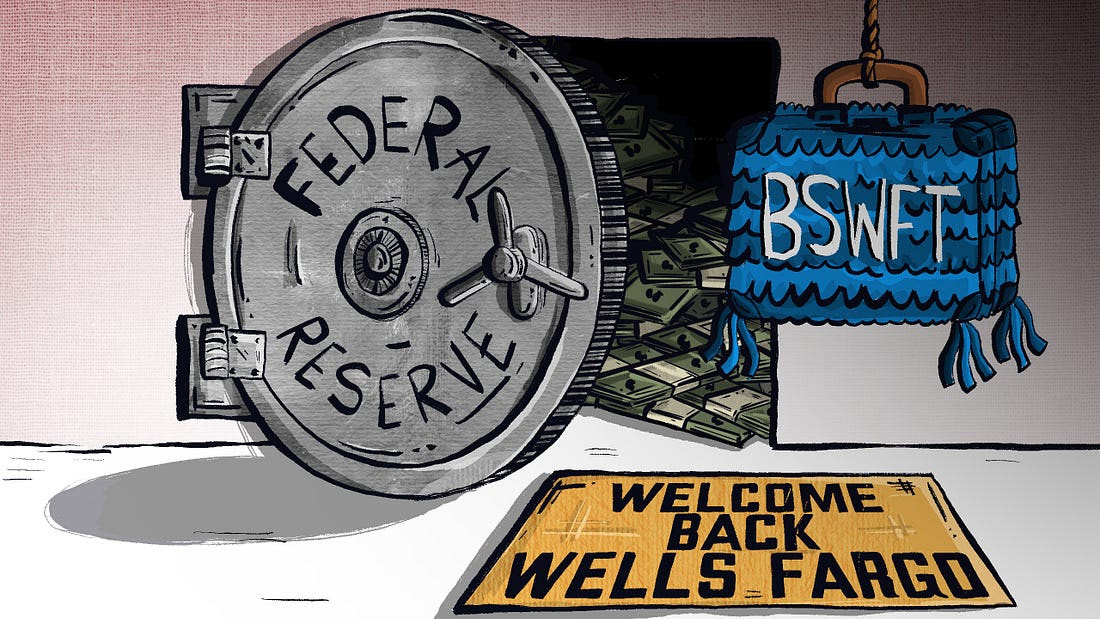Business
Cash-Strapped California Inches Closer To Handing Taxpayer Home Loans To Illegal Migrants

 From the Daily Caller News Foundation
From the Daily Caller News Foundation
California lawmakers are one step closer to making hundreds of millions of taxpayer-funded home loans available to residents living in the country illegally.
Democrats on the California Senate Appropriations Committee unanimously approved AB 1840 to move forward on Thursday, according to an official vote tally of the legislation. The bill has one last chance to be struck down on the Senate floor, where Democrats wield majority power, before it lands on Gov. Gavin Newsom’s desk.
The legislation seeks to amend the California Dream For All Shared Appreciation Loan program, an initiative launched last year that provides first-time homebuyers with a loan of up to 20% of the house’s purchase price for down payment or closing cost. If passed and signed into law, illegal migrants living in California would be eligible to apply for a piece of the pie.
“Once again, California has chosen to prioritize illegal immigration and fiscal irresponsibility over the needs of its citizens, all while facing a $60 billion deficit that will ultimately be passed onto taxpayers,” San Diego County Supervisor Jim Desmond said in a statement provided to the Daily Caller News Foundation.
“California is in dire financial straits, yet lawmakers continue to prioritize programs that incentivize illegal immigration and strain local resources,” Desmond continued. “Expanding this program to include illegal immigrants is not just another handout — it’s a massive overreach that shifts the financial burden onto law-abiding taxpayers.”
These taxpayer-funded home loans are interest-free and borrowers are not required to dole out monthly payments, making the program incredibly popular with California residents.
When applications for the $300 million program first opened up in May 2023 — offering interest-free loans to roughly 2,300 middle and lower-income homebuyers — the money ran out in less than two weeks, according to the LA Times. State officials have since tightened eligibility for the program, requiring that at least one of the applicants be a first-generation home buyer and replacing the first-come-first-serve model with a lottery.
Despite California struggling to cope with a budget deficit in the tens of billions of dollars, and availability for the program incredibly tight already, one state lawmaker felt the loan program wasn’t inclusive enough.
Assemblymember Joaquin Arambula, a Democrat from Fresno, first introduced AB 1840 in January, with the goal of broadening the definition of “first-time home buyer” to include illegal immigrants. The lawmaker argued in March that the “social and economic benefits of homeownership should be available to everyone,” according to a local news KTLA. Arambula did not immediately respond to the the DCNF’s request for comment.
The legislation has since easily passed the Democrat-dominated California Assembly and sailed through the Senate Appropriations Committee — with opposition exclusively relegated to GOP lawmakers.
“California’s budget deficit continues to grow and Democratic lawmakers are so out of touch with everyday Californians that they and are quite literally taking money away from law-abiding citizens, their own constituents, and handing it over as a free gift to people who broke federal law to cross the border illegally,” California Sen. Brian Dahle stated to the DCNF.
“There’s no accountability and transparency when it comes to the Democrats’ spending sprees, and it’s unfortunate because many Californians see homeownership as nothing more than an illusion at this point,” Dahle continued.
California is experiencing a massive budget shortfall.
State lawmakers in June approved a budget that slashed spending and temporarily raised taxes on businesses in an effort to shore up a nearly $50 billion budget deficit, according to the Associated Press. The dire financial situation marks a far cry from the more than $100 billion surplus the state enjoyed roughly two years ago, but those revenue spikes proved only temporary as rising unemployment, inflation and a slowing of the tech industry has battered California pocketbooks.
The state’s deficit was roughly $ 32 billion in 2023, which grew to more than $46 billion earlier this year and is now around $60 billion, according to California Republicans — drawing questions as to why lawmakers would open up a highly-coveted loan program to a large swath of the population that does not hold legal status.
Nearly two million illegal migrants live in California, according to data published by the Pew Research Center in July.
It’s not immediately clear if Newsom will sign the legislation. When reached for comment, a spokesperson said the governor’s office does not typically comment on pending legislation, adding that the governor would “evaluate the legislation on its merits” should it reach his desk.
Approval of AB 1840 came on the same day that Vice President Kamala Harris’ campaign announced she would be unveiling a proposal similar to her home state’s current program: $25,000 in down payment support for first-time homebuyers, including greater support for first-generation homeowners.
It’s not clear if the proposal from Harris — who has recently attempted to cast herself as more of a border hawk — would explicitly exclude illegal immigrants. Her campaign did not respond to a request for comment from the DCNF.
California Republicans, in the meantime, are left balking at their own state’s legislative actions.
“Many legal California residents can’t afford a home in their own state,” California Sen. Brian Jones said to the DCNF. He is one of only two GOP members on the Senate Appropriations Committee.
“Instead of addressing the housing crisis, radical Democrat lawmakers want to help illegal immigrants buy houses with the gift of taxpayer funds,” Jones continued. “With a $62 billion budget deficit, we need to focus on preserving essential government functions, not unfair political spending for those here illegally.”
Business
WEF-linked Linda Yaccarino to step down as CEO of X

From LifeSiteNews
Yaccarino had raised concerns among conservatives and free speech advocates for previously serving as chairwoman of a World Economic Forum taskforce and promoting DEI and the COVID shots.
X CEO, Linda Yaccarino, announced today that she is departing from her position at the social media giant.
“After two incredible years, I’ve decided to step down as CEO of 𝕏,” wrote Yaccarino on X.
“When Elon Musk and I first spoke of his vision for X, I knew it would be the opportunity of a lifetime to carry out the extraordinary mission of this company,” she continued. “I’m immensely grateful to him for entrusting me with the responsibility of protecting free speech, turning the company around, and transforming X into the Everything App.”
“I’m incredibly proud of the X team – the historic business turn around we have accomplished together has been nothing short of remarkable,” she said.
After two incredible years, I’ve decided to step down as CEO of 𝕏.
When @elonmusk and I first spoke of his vision for X, I knew it would be the opportunity of a lifetime to carry out the extraordinary mission of this company. I’m immensely grateful to him for entrusting me…
— Linda Yaccarino (@lindayaX) July 9, 2025
Musk hired Yaccarino in May 2023, seven months after his $44 billion purchase of the tech company, then known as “Twitter.”
At the time, Musk’s choice to take the helm at his newly acquired company raised eyebrows among conservative observers who had earlier rejoiced at the tech mogul’s intent to rescue free speech on the internet but now were troubled about the credentials of the digital platform’s new head.
Their concerns were not without good reason.
Yaccarino had previously served as chairwoman of the World Economic Forum’s “future of work” taskforce and sat on the globalist group’s “steering committee” for “media, entertainment, and culture industry.”
She had also boasted about her role as an early cheerleader for the untested COVID-19 jab.
As 2021–2022 Ad Council Chair, she “partnered with the business community, the White House, and government agencies to create a COVID-19 vaccination campaign, featuring Pope Francis and reaching over 200 million Americans,” according to her biography page at NBCUniversal, where she had been president before being lured to Twitter by Musk.
While at NBCUniversal, she also pushed discriminatory, equity-based hiring practices, based on “diversity” characteristics such as gender and race.
“At NBCU, she uses the power of media to advance equity and helps to launch DEI [Diversity, Equity, Inclusion]-focused initiatives,” recounted her online biography.
For the most part, over the last two years, Yaccarino’s performance at X allayed suspicions free speech activists at first harbored.
“Honestly, I was worried when she was hired but she didn’t burn down the house,” quipped popular conservative X account, @amuse.
Mike Benz, who serves as executive director of the Foundation For Freedom Online, a free speech watchdog organization dedicated to restoring the promise of a free and open internet, was far more effusive in his praise of Yaccarino.
“Linda stood up and fought for free speech during arguably its most acute crisis moment in world history when we were almost on the brink of losing it,” said Benz in an X post. “She stepped up for all of us in the face of what seemed like insurmountable pressure from governments, advertisers, boycotters, banking institutions, and astroturfed lynch mobs.”
Automotive
Federal government should swiftly axe foolish EV mandate

From the Fraser Institute
Two recent events exemplify the fundamental irrationality that is Canada’s electric vehicle (EV) policy.
First, the Carney government re-committed to Justin Trudeau’s EV transition mandate that by 2035 all (that’s 100 per cent) of new car sales in Canada consist of “zero emission vehicles” including battery EVs, plug-in hybrid EVs and fuel-cell powered vehicles (which are virtually non-existent in today’s market). This policy has been a foolish idea since inception. The mass of car-buyers in Canada showed little desire to buy them in 2022, when the government announced the plan, and they still don’t want them.
Second, President Trump’s “Big Beautiful” budget bill has slashed taxpayer subsidies for buying new and used EVs, ended federal support for EV charging stations, and limited the ability of states to use fuel standards to force EVs onto the sales lot. Of course, Canada should not craft policy to simply match U.S. policy, but in light of policy changes south of the border Canadian policymakers would be wise to give their own EV policies a rethink.
And in this case, a rethink—that is, scrapping Ottawa’s mandate—would only benefit most Canadians. Indeed, most Canadians disapprove of the mandate; most do not want to buy EVs; most can’t afford to buy EVs (which are more expensive than traditional internal combustion vehicles and more expensive to insure and repair); and if they do manage to swing the cost of an EV, most will likely find it difficult to find public charging stations.
Also, consider this. Globally, the mining sector likely lacks the ability to keep up with the supply of metals needed to produce EVs and satisfy government mandates like we have in Canada, potentially further driving up production costs and ultimately sticker prices.
Finally, if you’re worried about losing the climate and environmental benefits of an EV transition, you should, well, not worry that much. The benefits of vehicle electrification for climate/environmental risk reduction have been oversold. In some circumstances EVs can help reduce GHG emissions—in others, they can make them worse. It depends on the fuel used to generate electricity used to charge them. And EVs have environmental negatives of their own—their fancy tires cause a lot of fine particulate pollution, one of the more harmful types of air pollution that can affect our health. And when they burst into flames (which they do with disturbing regularity) they spew toxic metals and plastics into the air with abandon.
So, to sum up in point form. Prime Minister Carney’s government has re-upped its commitment to the Trudeau-era 2035 EV mandate even while Canadians have shown for years that most don’t want to buy them. EVs don’t provide meaningful environmental benefits. They represent the worst of public policy (picking winning or losing technologies in mass markets). They are unjust (tax-robbing people who can’t afford them to subsidize those who can). And taxpayer-funded “investments” in EVs and EV-battery technology will likely be wasted in light of the diminishing U.S. market for Canadian EV tech.
If ever there was a policy so justifiably axed on its failed merits, it’s Ottawa’s EV mandate. Hopefully, the pragmatists we’ve heard much about since Carney’s election victory will acknowledge EV reality.
-

 International2 days ago
International2 days agoChicago suburb purchases childhood home of Pope Leo XIV
-

 Daily Caller2 days ago
Daily Caller2 days agoBlackouts Coming If America Continues With Biden-Era Green Frenzy, Trump Admin Warns
-

 Daily Caller2 days ago
Daily Caller2 days ago‘I Know How These People Operate’: Fmr CIA Officer Calls BS On FBI’s New Epstein Intel
-

 National1 day ago
National1 day agoLiberal ‘Project Fear’ A Longer Con
-

 Censorship Industrial Complex1 day ago
Censorship Industrial Complex1 day agoCanadian pro-freedom group sounds alarm over Liberal plans to revive internet censorship bill
-

 Crime24 hours ago
Crime24 hours agoTrump supporters cry foul after DOJ memo buries the Epstein sex trafficking scandal
-

 Daily Caller24 hours ago
Daily Caller24 hours agoTrump Issues Order To End Green Energy Gravy Train, Cites National Security
-

 Daily Caller16 hours ago
Daily Caller16 hours agoUSAID Quietly Sent Thousands Of Viruses To Chinese Military-Linked Biolab







